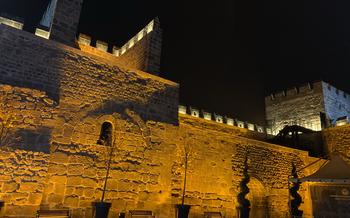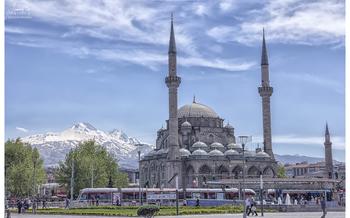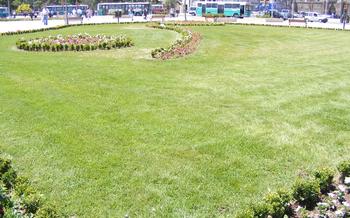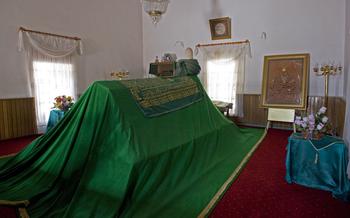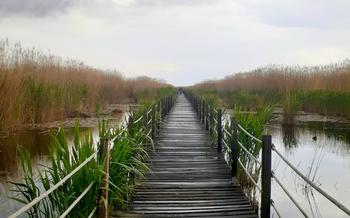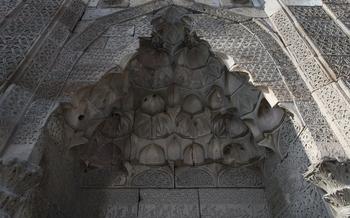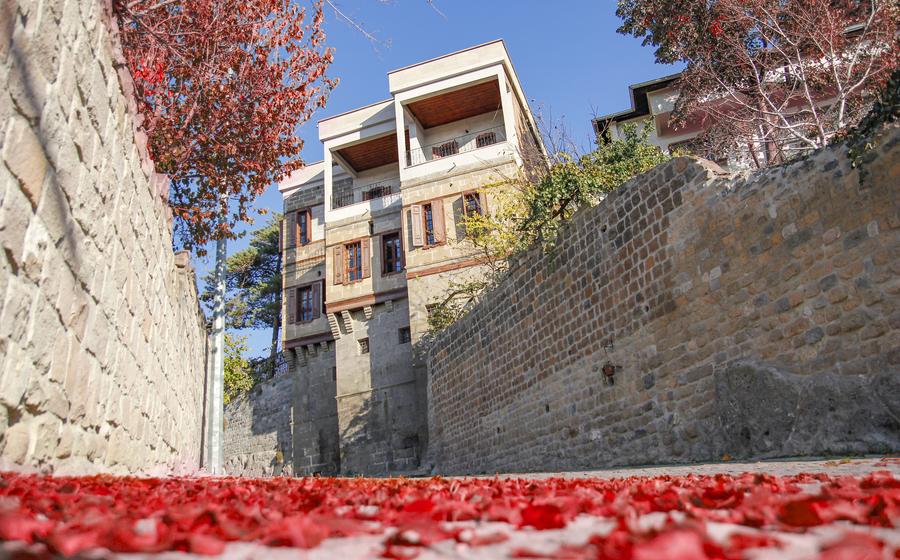
Terzi Baba Türbesi
- The Terzi Baba Türbesi: A Spiritual Haven
- Unveiling Terzi Baba's Legacy
- A Glimpse into Turkish Sufism
- The Essence of Sufi Philosophy and Spirituality
- Exploring the Shrine's Architectural Masterpiece
- Paying Homage to Terzi Baba
- Delving into the Shrine's History
- Uncovering the Mystical Traditions
- Witnessing the Dervish Ceremony
- Connecting with the Local Community
- Tasting Kayseri's Delights
- Venturing Beyond the Shrine
- Planning Your Pilgrimage
- Capturing the Beauty
- Insider Tip: Unveiling Hidden Treasures
The Terzi Baba Türbesi: A Spiritual Haven
Nestled in the heart of the ancient city of Kayseri, Turkey, lies a revered spiritual sanctuary known as the Terzi Baba Türbesi. This magnificent shrine, dedicated to the Sufi saint Terzi Baba, stands as a testament to the rich cultural heritage and profound religious traditions that have shaped Anatolia for centuries. The Terzi Baba Türbesi is not merely a historical monument; it is a living testament to the enduring power of faith, a place where pilgrims and visitors from all walks of life seek solace, guidance, and spiritual enlightenment.
The shrine's history is deeply intertwined with the life and teachings of Terzi Baba, a revered Sufi master who lived in the 13th century. Known for his wisdom, compassion, and unwavering devotion to God, Terzi Baba left an indelible mark on the spiritual landscape of Kayseri. His teachings continue to inspire and guide seekers of truth to this day.
Conveniently located in the city center, the Terzi Baba Türbesi is easily accessible by foot or public transportation. Its striking architectural features, characterized by intricate stone carvings, elegant domes, and soaring minarets, immediately captivate visitors. The shrine's interior is equally impressive, adorned with exquisite tilework, colorful stained glass windows, and intricate calligraphy that evoke a sense of awe and reverence.
Beyond its architectural splendor, the Terzi Baba Türbesi holds immense spiritual significance for pilgrims and devotees. It is believed that Terzi Baba's tomb, located within the shrine, possesses the power to grant wishes and bestow blessings upon those who visit with pure intentions. The shrine serves as a focal point for pilgrimage, where people from all corners of Turkey and beyond come to pay homage to Terzi Baba and seek his divine intercession.
Unveiling Terzi Baba's Legacy
Terzi Baba, whose name translates to "Tailor Father," remains an enigmatic figure shrouded in mystery. Legends and stories abound, painting a vivid picture of his extraordinary life and teachings. It is said that he possessed exceptional spiritual powers and the ability to heal the sick through his prayers.
The Tailor Who Healed Hearts
According to local lore, Terzi Baba was a humble tailor who lived in Kayseri during the 13th century. Despite his modest profession, he was revered for his wisdom, kindness, and healing abilities. People from all walks of life sought his guidance and blessings, believing that his touch could cure ailments and bring solace to troubled souls.
A Master of Sufism
Terzi Baba was a devout Sufi mystic who dedicated his life to spreading the teachings of love, compassion, and unity. He emphasized the importance of self-purification, humility, and the remembrance of God. His teachings resonated with people from all backgrounds, inspiring them to embark on their own spiritual journeys.
A Legacy that Endures
Terzi Baba's influence on Anatolian mysticism was profound. His teachings and practices laid the foundation for a rich Sufi tradition that continues to flourish in Turkey today. His shrine in Kayseri remains a place of pilgrimage for those seeking spiritual guidance and inspiration, a testament to the enduring legacy of this remarkable figure.
A Glimpse into Turkish Sufism
The Essence of Sufi Philosophy and Spirituality
At the heart of Sufism lies a profound philosophy that emphasizes the pursuit of spiritual enlightenment and a direct connection with the divine. Sufis believe that true spirituality transcends religious dogma and outward rituals, focusing instead on cultivating an inner awareness and a deep sense of love and devotion.
They embrace the concept of tawhid, the oneness of God, and strive to purify their hearts and minds from worldly distractions to achieve a state of spiritual closeness to the divine. Through their teachings, Sufis aim to guide individuals on a journey of self-discovery, introspection, and the realization of their true potential.
Sufism also places great importance on the concept of fana, or annihilation of the ego. This involves surrendering one's individual desires and attachments, allowing the divine presence to permeate one's being. By letting go of the ego, Sufis seek to transcend the limitations of the self and experience a profound sense of unity with the divine.
Furthermore, Sufis emphasize the significance of love and compassion in their spiritual practices. They believe that true love extends beyond personal relationships and encompasses a universal love for all beings, regardless of their differences. Through love, Sufis strive to break down barriers, promote understanding, and foster a sense of harmony and unity within society.
Exploring the Shrine's Architectural Masterpiece
The Terzi Baba Türbesi stands as a testament to the architectural prowess of the Seljuk era. Its striking exterior captivates the eye with its intricate stone carvings and decorative motifs. The walls are adorned with verses from the Quran and geometric patterns, showcasing the fusion of Islamic art and architecture. The entrance, framed by an elegant archway, invites visitors into a realm of spirituality and serenity.
Stepping inside the shrine, one is greeted by an awe-inspiring sight. The interior boasts a harmonious blend of architectural elements, each contributing to its sacred ambiance. The dome, supported by slender columns, creates a sense of spaciousness and grandeur. The walls are adorned with exquisite tilework, featuring vibrant colors and intricate designs that narrate stories from Islamic history and mythology.
The mihrab, the niche indicating the direction of prayer, is a masterpiece in itself. Intricately carved with verses from the Quran, it serves as a focal point for devotees seeking spiritual guidance. The minbar, the elevated platform from which sermons are delivered, is adorned with delicate carvings and intricate latticework, reflecting the artistry and craftsmanship of the era.
Every corner of the Terzi Baba Türbesi reveals a hidden meaning or symbol. The octagonal shape of the building represents the eight gates of paradise, while the number of windows corresponds to the five pillars of Islam. The intricate geometric patterns symbolize the interconnectedness of all things in the universe.
Exploring the Terzi Baba Türbesi is like embarking on a journey through history and spirituality. Its architectural masterpiece invites visitors to delve deeper into the rich cultural heritage of Turkey and to experience the profound essence of Sufism.
Paying Homage to Terzi Baba
Pilgrims and visitors to the Terzi Baba Türbesi observe specific customs and traditions to pay homage to the revered saint. When entering the shrine, it is customary to remove one's shoes as a sign of respect. Visitors are encouraged to dress modestly, covering their shoulders and knees. Once inside the shrine, it is customary to walk around the tomb three times in a clockwise direction, reciting prayers or verses from the Quran. Many visitors choose to make offerings to Terzi Baba, such as flowers, candles, or small tokens of devotion. These offerings are placed on the tomb or in designated areas within the shrine. The atmosphere inside the Terzi Baba Türbesi is one of tranquility and reverence, inviting visitors to connect with the spiritual essence of the saint and seek his blessings.
Delving into the Shrine's History
The Terzi Baba Türbesi, steeped in history and religious significance, holds a prominent place in Kayseri's spiritual landscape. Its origins can be traced back to the 13th century, when the renowned Sufi saint, Terzi Baba, chose this site as his final resting place. The construction of the shrine was undertaken by his devoted followers, who sought to honor his legacy and perpetuate his teachings.
Over the centuries, the Terzi Baba Türbesi has undergone several renovations and expansions, reflecting the enduring reverence for Terzi Baba and the evolving architectural styles of Anatolia. In the 16th century, the shrine underwent a significant restoration under the patronage of the Ottoman sultan, Suleiman the Magnificent, who held Terzi Baba in high esteem. These renovations further embellished the shrine, adding to its grandeur and architectural splendor.
The Terzi Baba Türbesi stands as a testament to the rich cultural and religious heritage of Kayseri. Its historical significance is intertwined with the life of Terzi Baba, a revered figure in Anatolian mysticism, and the shrine continues to attract pilgrims and visitors from far and wide who seek spiritual enlightenment and connection with the divine.
Uncovering the Mystical Traditions
Within the sacred confines of the Terzi Baba Türbesi, a rich tapestry of mystical traditions unfolds, inviting visitors to delve into the depths of Sufism. The shrine serves as a sanctuary for dervishes, the wandering mystics of the Islamic world, who gather here to engage in profound spiritual practices.
Central to Sufi spirituality is the concept of dhikr, a form of remembrance of God. Dervishes engage in rhythmic chanting of sacred phrases, immersing themselves in a trance-like state that allows them to transcend the boundaries of the physical world and commune with the divine.
The shrine also bears witness to the mesmerizing sema ceremony, a sacred dance performed by whirling dervishes. This awe-inspiring spectacle embodies the essence of Sufi mysticism, as the dervishes, clad in long, flowing robes, spin gracefully, symbolizing their connection to the cosmos and their journey towards enlightenment.
The shrine's atmosphere is further enriched by the haunting melodies of Sufi music, accompanied by the rhythmic beat of drums and the plaintive strains of the ney, a traditional reed flute. These melodies transport listeners to a realm of spiritual ecstasy, creating a bridge between the earthly and the divine.
Through these practices and rituals, the Terzi Baba Türbesi becomes a living testament to the enduring legacy of Sufism, offering visitors a glimpse into the mystical traditions that have shaped the cultural and spiritual landscape of Turkey for centuries.
Witnessing the Dervish Ceremony
The Terzi Baba Türbesi is renowned for its captivating sema ceremony, a spiritual practice performed by dervishes. This mesmerizing ritual involves a series of graceful whirling movements accompanied by enchanting music and rhythmic chanting. The dervishes, adorned in long white robes, symbolize the planets revolving around the sun, representing their connection to the divine.
As the music crescendos, the dervishes begin their graceful rotations, embodying a state of spiritual transcendence. Their movements are fluid and synchronized, creating a mesmerizing spectacle that draws visitors from around the world. The rhythmic chanting, accompanied by the melodious tunes of traditional instruments, further elevates the spiritual atmosphere.
The sema ceremony is a testament to the rich mystical traditions of Sufism. It is a profound expression of devotion, where the dervishes seek to unite with the divine through movement, music, and poetry. Witnessing this awe-inspiring spectacle is an unforgettable experience that leaves visitors with a sense of wonder and spiritual upliftment. So, if you find yourself in Kayseri, be sure to attend a dervish ceremony at the Terzi Baba Türbesi to experience the magic firsthand.
Connecting with the Local Community
Visiting the Terzi Baba Türbesi offers a unique opportunity to connect with the local community and gain insights into their customs, beliefs, and way of life. The people of Kayseri are renowned for their warm hospitality and generosity, and they are always eager to welcome visitors and share their culture.
Engage in Meaningful Conversations
Strike up conversations with the locals and pilgrims who visit the shrine. Inquire about their daily lives, their families, and their experiences with the Terzi Baba Türbesi. You may be surprised by the depth of their knowledge and the stories they have to share.
Experience Local Traditions and Customs
Observe the customs and traditions that are practiced at the shrine. Pay attention to the way people dress, the way they interact with each other, and the way they perform rituals. These observations will give you a deeper understanding of Turkish culture and spirituality.
Indulge in Culinary Delights
Take the opportunity to sample the delicious local cuisine of Kayseri. Visit the nearby restaurants and cafes to savor traditional dishes such as mantı (Turkish ravioli) and pastırma (cured beef). The flavors and aromas of Turkish cuisine will tantalize your taste buds and leave you wanting more.
Build Bridges of Understanding
Through your interactions with the local community, you will have the chance to build bridges of understanding and cultural exchange. Share your own experiences and perspectives, and be open to learning from others. These connections will create lasting memories and foster a sense of global community.
Tasting Kayseri's Delights
A journey to the Terzi Baba Türbesi is not complete without immersing yourself in the culinary delights of Kayseri. The city boasts a rich and diverse cuisine that reflects its unique blend of cultures and traditions. Indulge in the mouthwatering flavors of mantı, delicate dumplings filled with seasoned ground beef, and pastırma, a cured and air-dried beef delicacy that is a local specialty.
Stroll through the vibrant streets of Kayseri and discover the hidden culinary gems. Sample the tantalizing street food, from freshly baked gözleme, a savory flatbread filled with various ingredients, to crispy lahmacun, a Turkish pizza topped with minced meat and vegetables. Treat your sweet tooth to traditional Turkish desserts such as künefe, a shredded filo dough pastry soaked in sweet syrup and filled with melted cheese, and lokum, a soft and chewy delight flavored with rosewater or other aromatic essences.
Savor the warm hospitality of the local people as they share their culinary traditions with you. Participate in a cooking class and learn the secrets of Turkish cuisine, or simply engage in conversation with friendly locals who are always eager to recommend their favorite dishes and restaurants.
Through its culinary delights, Kayseri offers a tempting journey that will satisfy your taste buds and leave you with a lasting impression of Turkish hospitality and culture.
Venturing Beyond the Shrine
While the Terzi Baba Türbesi stands as a captivating attraction in its own right, Kayseri offers a wealth of additional historical and cultural treasures waiting to be explored. Embark on a journey through time as you visit the majestic Kayseri Castle, a testament to the city's rich past. Marvel at the architectural grandeur of the Hunat Hatun Complex, a mesmerizing blend of Seljuk and Ottoman influences. Delve into the depths of history at the Kayseri Archaeological Museum, where ancient artifacts and relics narrate the captivating story of this region's past. Immerse yourself in the vibrant atmosphere of the local markets and bazaars, where you can haggle for unique souvenirs and sample the delectable street food that tantalizes the senses. Kayseri beckons you to uncover its hidden gems and immerse yourself in the tapestry of its rich cultural heritage.
Planning Your Pilgrimage
To ensure a fulfilling and enriching experience, careful planning is essential. The best time to visit the Terzi Baba Türbesi is during the spring or fall, when the weather is pleasant and conducive to exploration. Kayseri is well-connected by air and rail, making it accessible from various parts of Turkey and beyond. When choosing your accommodation, consider options that align with your budget and preferences. To delve deeper into Kayseri's cultural tapestry, create a personalized itinerary that includes visits to other historical and cultural landmarks, such as the iconic Kayseri Castle or the fascinating Kayseri Archaeological Museum. Embrace the opportunity to connect with the local community, savor the delectable local cuisine, and discover hidden gems that will leave a lasting impression.
Capturing the Beauty
While visiting the Terzi Baba Türbesi, you'll have ample opportunities to capture the beauty of this sacred site. The stunning architecture, intricate carvings, and serene surroundings provide a picturesque backdrop for photography enthusiasts. Take your time to explore the shrine's various angles and perspectives, ensuring you capture the essence of its spiritual aura. Don't forget to share your beautiful shots on social media, using relevant hashtags to inspire and connect with fellow travelers. Your photographs can serve as a visual testament to the shrine's magnificence, encouraging others to embark on their own pilgrimage to this spiritual haven.
Insider Tip: Unveiling Hidden Treasures
Beyond the renowned Terzi Baba Türbesi, Kayseri boasts a treasure trove of hidden historical and cultural gems waiting to be discovered. Venture off the beaten path and explore the lesser-known attractions that offer a glimpse into the city's rich past. Seek out the ancient ruins, hidden courtyards, and forgotten mosques that tell the stories of Kayseri's diverse heritage.
Engage with the friendly locals and guides who can provide insider knowledge and lead you to these hidden treasures. They can share stories, legends, and anecdotes that bring the city's history to life. Embrace the opportunity to connect with the local community and gain a deeper understanding of their customs, beliefs, and way of life.
Creating a truly unique and unforgettable travel experience requires a willingness to explore beyond the obvious. Embrace your curiosity and let Kayseri's hidden treasures reveal themselves to you. Discover the secrets of this captivating city and return home with a heart full of memories and a thirst for further exploration.
